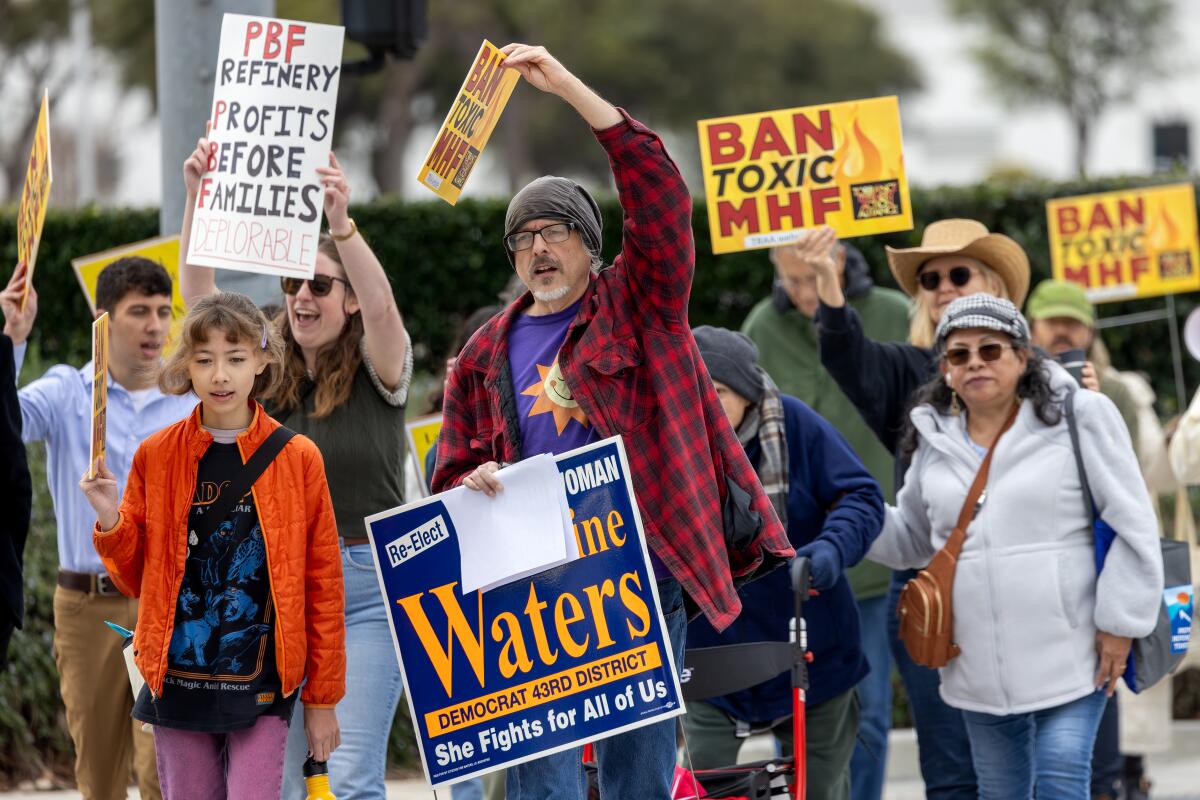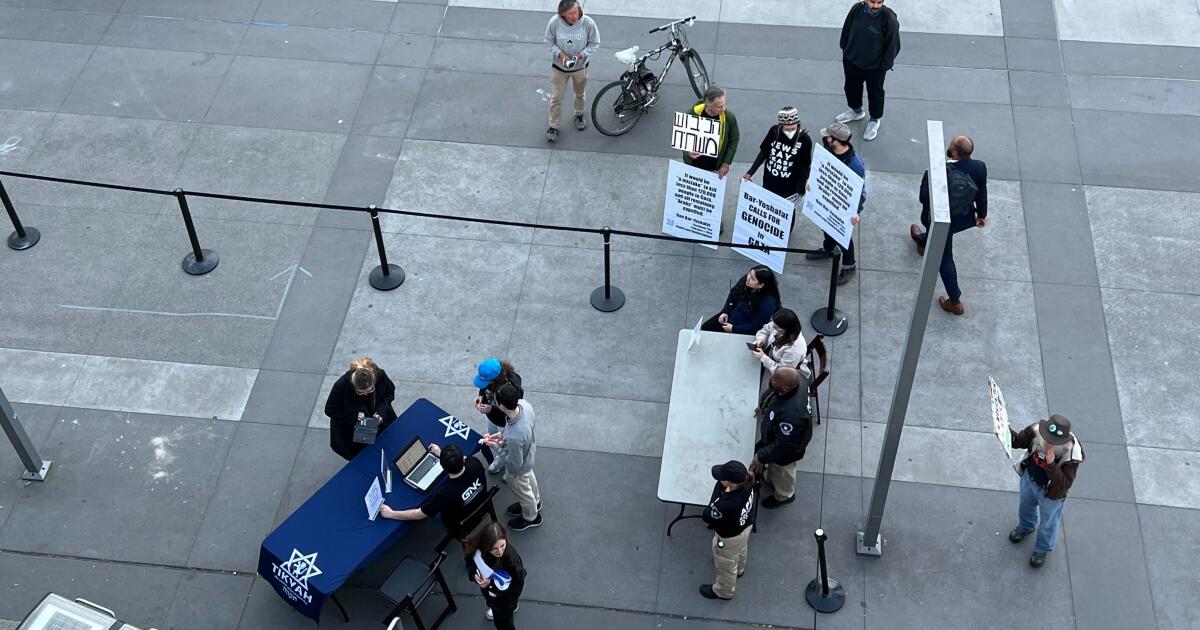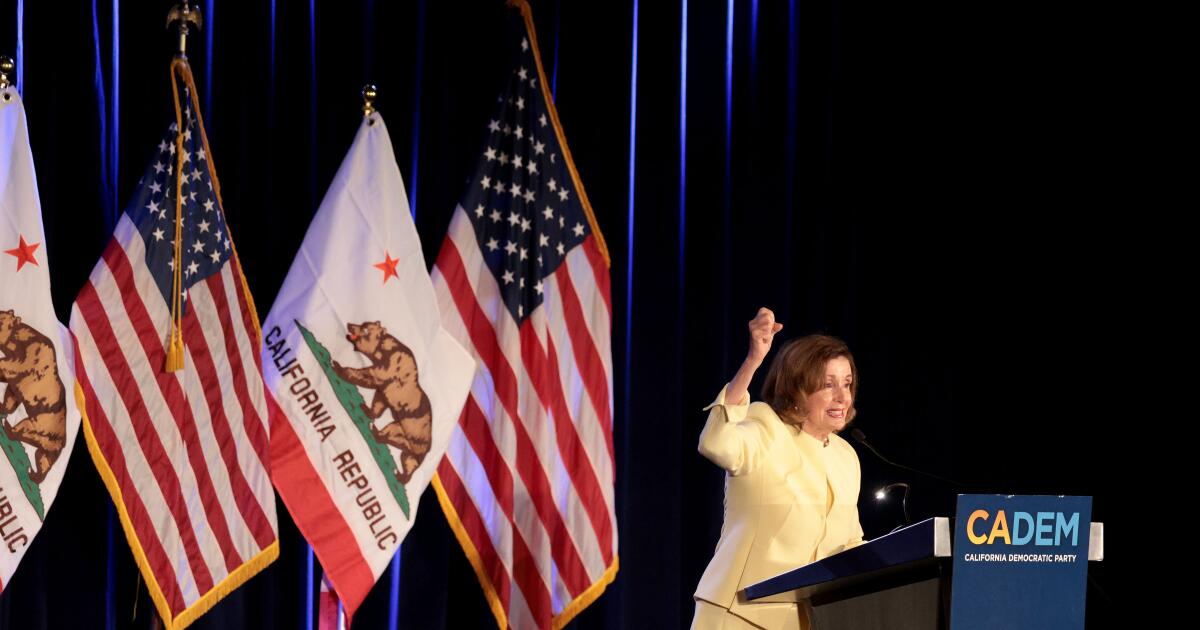Torrance resident Isabel Douvan Schwartz said she worries about a large earthquake affecting her community, largely because of the impact it could have on the massive Torrance refinery, two miles from her home.
The biggest concern is that the refinery continues to use hydrofluoric acid, a highly toxic chemical, to process fuel, a practice that Schwartz and other activists want to end.
“If hydrofluoric acid or modified hydrofluoric acid is released, a toxic cloud forms that hugs the ground and travels with the wind,” Schwartz said. “It can cause death and permanent serious injury to those exposed to it.”
Hortensia Gálvez participates in the rally.
(Irfan Khan / Los Angeles Times)
Schwartz was among dozens of protesters who held a rally in Columbia Park on Saturday to mark the ninth anniversary of an explosion at the then-Exxon Mobil refinery that injured four workers and in which debris from the explosion fell near tanks containing hydrofluoric acid, according to the federal government. regulators.
The Torrance Refinery Action Alliance organized the demonstration and argued that there are safer alternatives and that many of California's refineries no longer use hydrofluoric acid.
PBF Energy, which bought the refinery in 2016, issued a statement Saturday refuting the activists' allegations.
“We are aware of the activist group's misleading and inaccurate claims, which they have been making for years,” the statement said. “The cleanest burning gasoline sold in California requires the alkylate to meet the most stringent exhaust emissions requirements in the world. The Torrance Refinery has been safely and reliably manufacturing alkylates for transportation fuels using hydrogen fluoride (HF), including modified hydrogen fluoride (MHF), in its Alkylation Unit for more than 60 years, without any outside impact. of the site.”
On the refinery's website, PBF Energy maintains that Californians live in a state with strict environmental regulations, but can still drive wherever they want in the vehicles of their choice “with the assurance that their local refineries produce the combustion gasoline.” cleanest in the world through a process called alkylation. .”
As regulators noted, the 2015 explosion did not directly involve hydrofluoric acid, but debris came close to hitting tanks containing the chemical inside.
The California Division of Occupational Safety and Health, or Cal/OSHA, issued 19 citations against Exxon Mobil, most of which were classified as serious, for workplace safety and health violations. Exxon Mobil was fined $566,600.

The Torrance Refinery Action Alliance organized the rally and march to protest inaction by the industry and regulators.
(Irfan Khan / Los Angeles Times)
Cal/OSHA found that the company failed to eliminate known hazardous conditions and “intentionally failed to comply with state safety standards,” likely causing workers to be seriously injured or killed, according to the agency's Department of Industrial Relations.
Cal/OSHA also determined that company management knew that the electrostatic precipitator, which exploded in 2015, could explode during a flammable vapor leak. A safety review in 2007 addressed concerns about the leak, but the company failed to fix it, state regulators said.
Regulators at the U.S. Chemical Safety and Hazard Investigation Board reviewed the explosion and determined it was “preventable.”
“This is the ninth anniversary of what could have been a catastrophe,” Jane Affonso, vice president of the Torrance Refinery Action Alliance, said at Saturday's rally. “There was an explosion at the Torrance refinery, which is right there, and a large piece of equipment came within eight feet of the hydrofluoric acid tank, and if it had hit it, a lot of people would have been killed and injured.”












